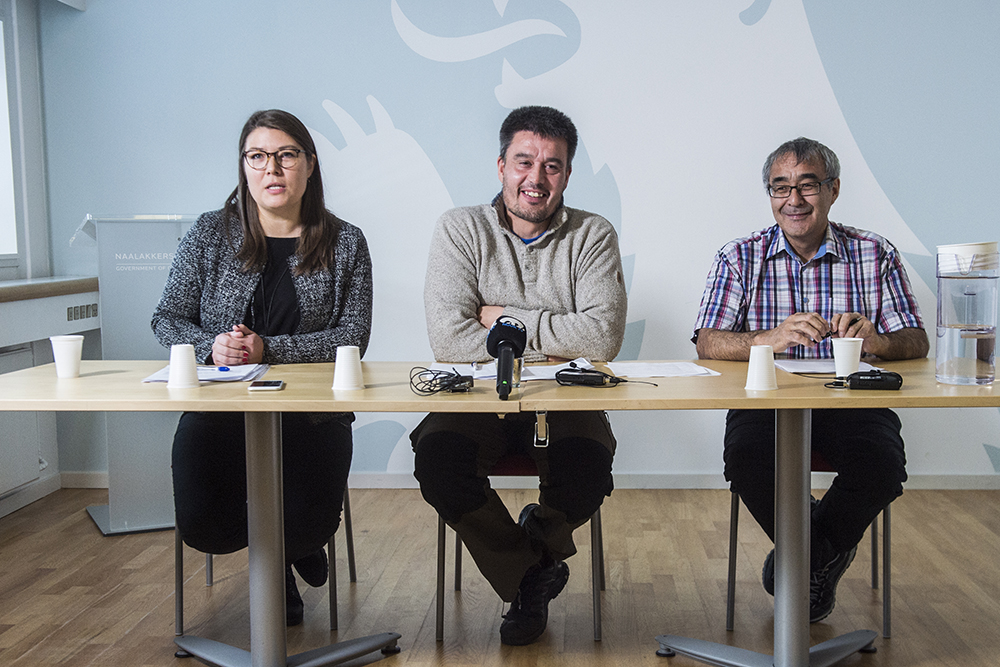A new supermajority coalition will govern Greenland
As far as political upheaval goes, Thursday’s announcement that Siumut, Greenland’s leading political party, was breaking with its two coalition partners to form a new supermajority government was something that most saw coming from a mile off.
Since coming to power in December 2014, Siumut’s three-party coalition, drawn together mostly because of a common support for uranium mining, had not had the easiest of relationships when it came to other issues. During the current session of Inatsisartut, the national assembly, the fissures appeared only to have grown wider, with the parties diverging on key issues, often appearing in the press bickering with each other.
So, when it emerged earlier this week that Siumut was flirting with IA, the largest opposition party, few found the likelihood of a match that far-fetched: politically, the two parties, who will be joined by Partii Naleraq in forming the new government, have much in common.

Both Siumut and IA fall to the left of centre, while Partii Naleraq is a Siumut off-shoot; they are all staunch supporters of independence (hence the creation of an ‘independence’ portfolio in the new cabinet); they favor the public sector doing more to address matters of social inequality; and they are in favour of using public measures to keep the country’s smallest communities viable.
For now, what differences the parties do have appear to have been papered over. Some of them are relatively minor, including whether to build a new building to house the national assembly. More troublesome is whether to permit uranium mining. The matter appeared to have been settled in a November 2013 Inatsisartut vote to allow it. The measure, however passed by just a single vote, and IA and Partii Naleraq remain opposed, suggesting that referendum should be called to let voters have the final say.
Rather than letting the issue divide them, the new coalition has decided to put off talking about it until they can work through more pressing matters.
“The parties don’t want this single issue to prevent us from being able to work together,” the manifesto states.
With 24 of Inatsiartut’s 31 seats, the coalition’s biggest challenge, it appears will be keeping a lid on internal rivalries: Siumut retains the premiership, but the party holds the same number of seats as IA, which is the only party other than Siumut ever to hold power in Greenland.
With just two seats, Partii Naleraq is, on paper, the junior partner in the new coalition. The party, however, was formed by Hans Enoksen, a former premier who, though he defected from Siumut in 2014, remains close to Kim Kielsen, the current premier.
With a coalition like that, who needs an opposition.